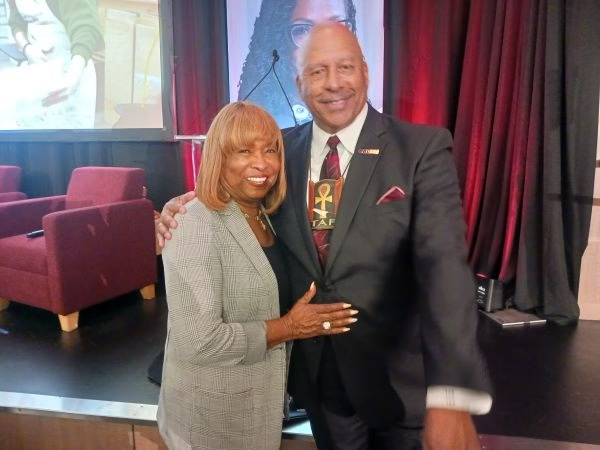Dr. Thomas Parham, president of Cal State University Dominguez Hills, is retiring from his post, effective at year’s end. And the world only learned of it after pulling off a major win in getting Supreme Court Justice Ketanji Brown Jackson to be the guest lecturer at the school’s President’s Distinguished Lecture series.
Under his leadership, Dominguez Hills has grown in size and in prestige as the school’s administration and the City of Carson’s elected officials have grown closer over the past seven years.
Dr. Thomas Parham emphasized that Dominguez Hills’ Presidential Distinguished Lecture Series is not just any lecture series. When he arrived at CSUDH in 2018, he envisioned the university as a space where pressing societal issues could be explored through rigorous discourse, elevating conversations beyond personalities to focus on critical topics.
The series began in 2018 with Tommy Smith, marking the 50th anniversary of his Black Power salute at the Mexico Olympics. His lecture, Silent Gesture: Can Athletics Be Used as a Platform for Social Justice?, drew 456 attendees plus overflow, signaling the series’ impact. Since then, the series has featured notable figures, including Xavier Becerra, former attorney general; a former secretary of the U.S. Department of Health and Human Services; then Rep. Karen Bass; Kenny G; artist Tony Scott; and several prominent news anchors.
Dr. Parham hopes the lecture series continues after his retirement. While this upcoming event will be the last he presides over, he sees it as a foundation for the campus to carry forward a tradition of critical, high-level discussion.
Landing Supreme Court Justice Ketanji Brown Jackson for the series was an 18-month process involving “framing the narrative about what we are asking, why it was important for her to consider coming, given the zillions of requests she undoubtedly gets.” Dr. Parham initially invited her for 2026, before publicly announcing his retirement, then successfully rescheduled for 2025 without revealing his reason. The invitation came together through careful planning, crafting the right message, and some luck. Ultimately, her participation was shaped by the compelling mission of the series and the meaningful dialogue it would bring to campus.
While the lecture series and the rapid growth of Dominguez Hills University are highlights of his tenure, Dr. Parham also takes credit for improving the university’s relationship with the City of Carson. Before his arrival, the campus had been sued twice by the city within three years over who should serve as the California Environmental Equality Act “lead agency” for CSUDH’s Master Plan, known as “University Village.”
Under Mayor Albert Robles, the city argued that it — not CSUDH or the California Office of Planning & Research — should control the environmental review process. The city claimed the university undertook major developments without consultation and had not contributed its fair share to the community. Litigation began in late 2017 through early 2018, but the city ultimately lost the case.
Following the election of Lula Davis-Holmes as Carson’s new mayor, Dr. Parham seized the opportunity to build bridges. He met with every council member and the new mayor, hosting lunches at Uncle Darrow’s New Orleans Grill to discuss the university’s value to the city. Drawing on his experience from Irvine, a city that integrates its university into civic life, he encouraged Carson’s leaders to treat the university as the city’s greatest asset and collaborate rather than litigate.
The city responded positively, supporting the campus master plan approval, signing a memorandum of understanding, and presenting CSUDH with a ceremonial key to the city. Today, the university and Carson maintain a collaborative partnership, with university leaders participating on city committees, co-hosting events, and promoting the campus through city banners, demonstrating a strong, mutually supportive relationship.
Dr. Parham noted that Dominguez Hills has a vision for broader collaboration across campus departments — arts, culture and advancement — to engage the city, provide meaningful student experiences, and benefit the community, though it is still emerging. The university has already partnered with the city on programs like rehabilitation services and student internships, helping train future professionals.
He emphasized that CSUDH can leverage its resources — like land and the theater department — to create facilities such as a Performing Arts Center, serving both instructional purposes and the community. Such initiatives require vision, courage, and thinking beyond traditional approaches.
Regarding sustainability, Dr. Parham said his legacy is not about his personality but the principles and standards of excellence he established. By embedding a culture of collaboration, he hopes future leaders and the community will continue to elevate the campus and maintain these partnerships. His tenure serves as an invitation for the city and the university to keep building on what has been started.



